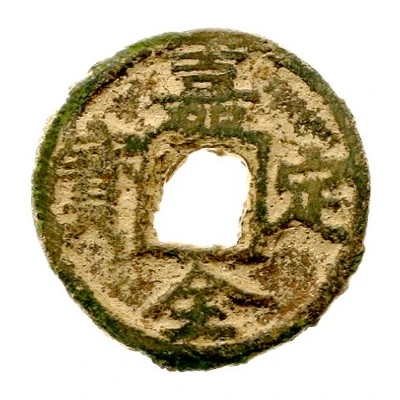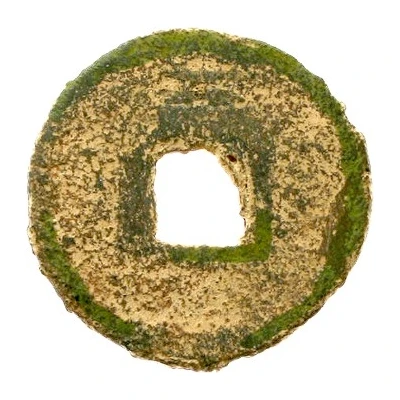


© Teutoburger Münzauktion
3 Cash - Jiading Quanbao; type 2; with value; iron ND
| Iron | - | 33 mm |
| Issuer | Empire of China |
|---|---|
| Emperor | Southern Song dynasty › Ningzong (宋寧宗) (1194-1224) |
| Type | Circulating commemorative coin |
| Years | 1208-1224 |
| Value | 3 Cash |
| Currency | Cash (621-1912) |
| Composition | Iron |
| Diameter | 33 mm |
| Shape | Round with a square hole |
| Technique | Cast |
| Orientation | Medal alignment ↑↑ |
| Demonetized | Yes |
| Updated | 2024-10-04 |
| Numista | N#219555 |
|---|---|
| Rarity index | 100% |
Reverse
One Chinese ideogram above.
Script: Chinese (traditional, regular script)
Lettering: 三
Translation:
San
Value 3
Edge
Plain
Comment
During the Jiading era, in addition to the regular Tongbao, Yuanbao, and Zhongbao coins, various other currency names are used:- 安寶 (Anbao; peaceful currency)
- 崇寶 (Chongbao; noble currency)
- 大寶 (Dabao; large currency)
- 封寶 (Fengbao; honoured currency)
- 洪寶 (Hongbao; great currency)
- 隆寶 (Longbao; eminent currency)
- 泉寶 (Quanbao; type 1; wealthy currency)
- 全寶 (Quanbao; type 2; perfect currency)
- 万寶 (Wanbao; uncountable currency)
- 新寶 (Xinbao; new currency)
- 興寶 (Xingbao; prosperous currency)
- 永寶 (Yongbao; everlasting currency)
- 真寶 (Zhenbao; type 1; true currency)
- 珍寶 (Zhenbao; type 2; precious currency)
- 正寶 (Zhengbao; orthodox currency)
- 至寶 (Zhibao; type 1; best currency)
- 之寶 (Zhibao; type 2; the currency)
These all appear to be from mints in Sichuan; however, the exact purpose of these pieces (collectively known as the substitution series) is uncertain.
One possible theory is that, because the Jiading era lasted 24 years and there are exactly 24 coin in this series, a different currency name was used each year.
Interesting fact
One interesting fact about this coin is that it was made of iron, which was a unusual choice of material for coins at that time, as most coins were made of copper, silver or gold. The use of iron in coinage was seen as a way to reduce the cost of production and make the coins more accessible to the general population. This decision was taken by the government of the Empire of China during the reign of Emperor Ningzong, who ruled from 1194 to 1224. The iron coins were minted in large quantities and were used as a means of exchange for everyday transactions. Despite being made of a less valuable material, these coins were still imprinted with the same level of craftsmanship and attention to detail as other coins of the time, featuring intricate designs and calligraphy. This interesting fact highlights the resourcefulness and innovation of the Empire of China's government in creating a currency that was both practical and accessible to the people.